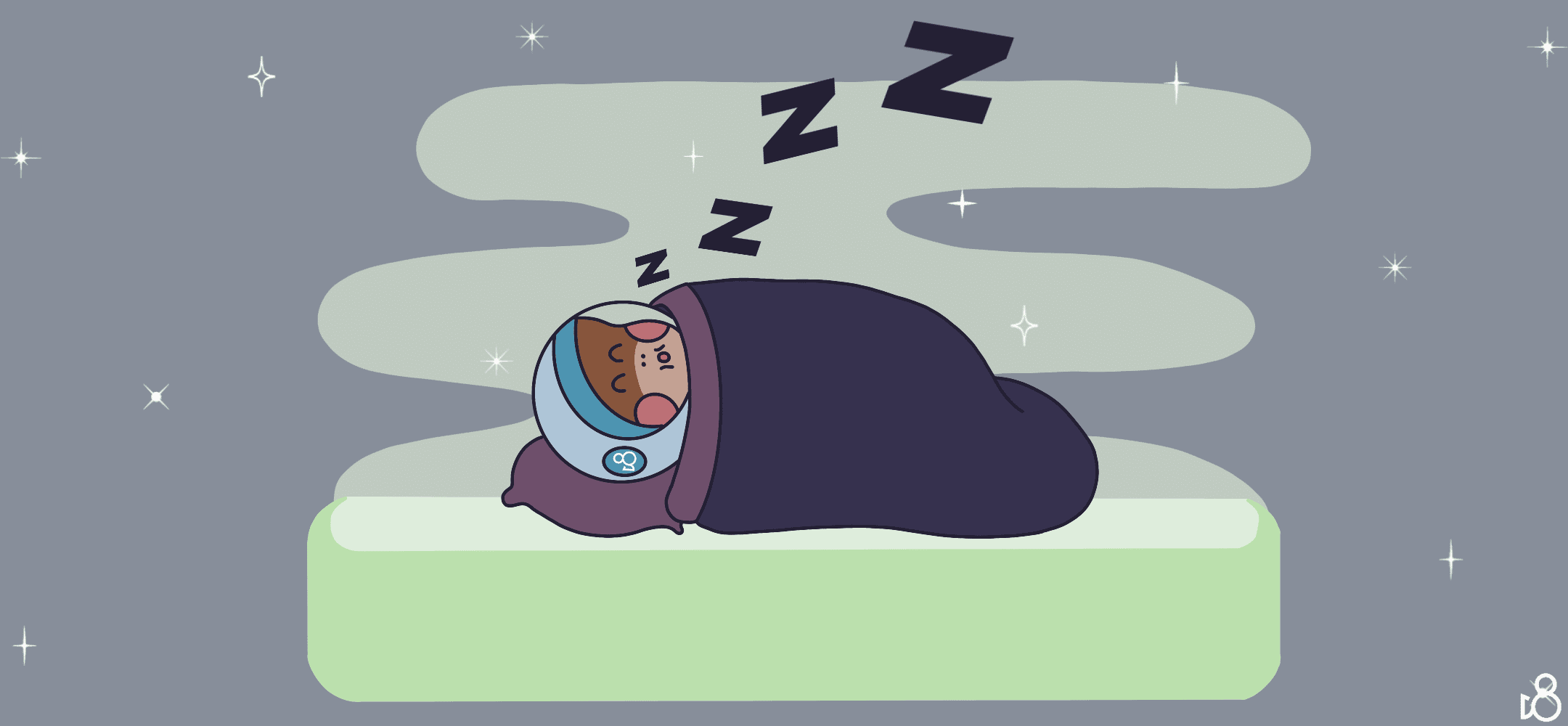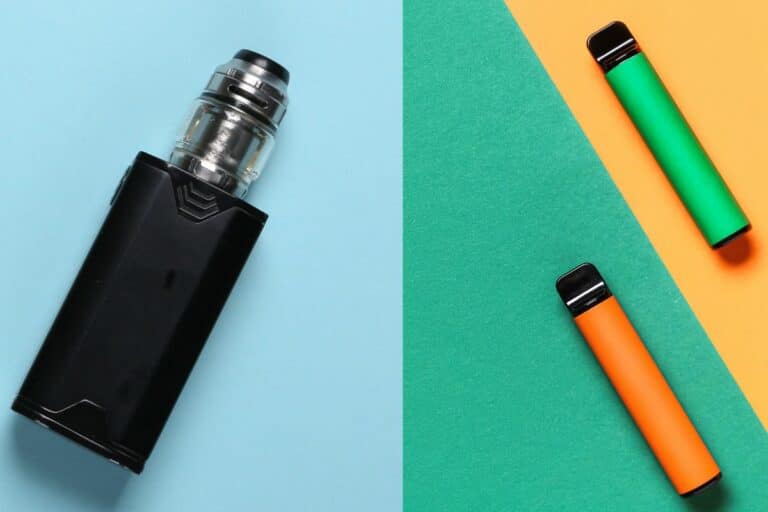Does Weed Make You Tired? Understanding Cannabis and Fatigue
Marijuana, or weed, tweaks your brain and feelings, famous for making you feel blissfully high and offering health benefits. THC is the magical ingredient that takes you to cloud nine. Meanwhile, CBD is like the mellow brother that keeps things smooth and boosts wellness. The way weed impacts your energy levels varies; some folks might end up feeling sleepier after indulging.
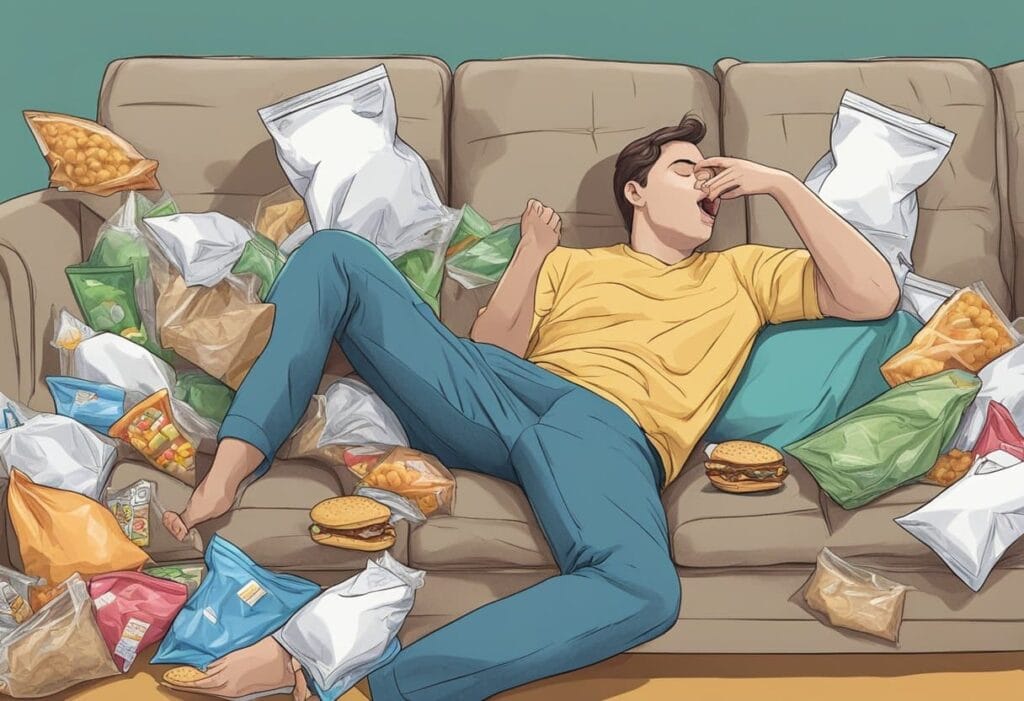
The relationship between cannabis and tiredness is not straightforward, as various factors influence the plant’s effects on an individual’s body. The specific strain of cannabis, its THC ratio, the quantity consumed, and an individual’s unique biochemistry all play a part in the overall experience. Some users may find that cannabis aids in relaxation and sleep, due to the sedative effects of certain strains or high levels of certain cannabinoids.
Furthermore, studies have suggested that weed can impact sleep cycles, either by facilitating quicker onset of sleep or affecting the quality of sleep. The effects of consuming cannabis flower for treatment of fatigue have garnered attention in clinical research, indicating a complex interaction between cannabis compounds and sleep-related factors. While some individuals use weed specifically to capitalize on its sedative properties, others may experience unwanted drowsiness as a side effect.
Chemical Composition of Cannabis
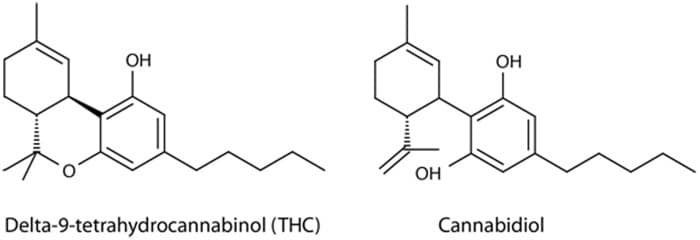
Source: https://www.ncbi.nlm.nih.gov/pmc/articles/PMC3736954/figure/fig1-2045125312457586/
Cannabis contains a complex array of chemical compounds that contribute to its various effects. The primary active components are cannabinoids and terpenes, which work individually and synergistically to produce a range of outcomes.
THC, CBD, and Other Cannabinoids
Cannabis is best known for its cannabinoids, especially tetrahydrocannabinol (THC) and cannabidiol (CBD). THC is the psychoactive component that contributes to the feeling of being “high” and can also have sedative effects, which may make a user feel tired. CBD does not cause psychoactive effects, but it is known for its potential therapeutic benefits, including relief from anxiety and pain.
Cannabinoids interact with the body’s endocannabinoid system, which plays a role in regulating numerous physiological processes, including sleep, mood, and appetite. The mechanism by which THC influences sleep appears complex, potentially affecting sleep cycles differently at various dosages. An analysis from Therapeutic Clinical Trials of Sativex®, a cannabis-based medicine, delves into the effects of THC and CBD on sleep.
Terpenes and Their Effects
Terpenes are aromatic compounds found throughout the plant kingdom, with a high concentration in cannabis. They contribute to the distinctive aroma of different cannabis strains and possess potential health effects. Common terpenes include myrcene, which is known for its sedative qualities, and limonene, noted for its uplifting and stress-relieving properties.
The interaction between cannabinoids and terpenes is referred to as the entourage effect, suggesting that these compounds may work together to enhance or modulate the overall effects of cannabis, including its impact on sleep and energy levels. The extent to which terpenes influence the therapeutic outcomes of cannabis consumption is still being studied, underlining their significance beyond merely contributing to the plant’s scent profile.
The Science of Cannabis and Sleep
Research on cannabis indicates it may have varying effects on sleep, mediated through its active chemicals known as cannabinoids. The relationship between weed and sleep involves complex interactions within the brain that can influence sleep-wake cycles and the secretion of sleep-related hormones.
Effects on Sleep Cycles
Cannabis contains diverse cannabinoids, with THC and CBD being the most studied. These substances appear to interact with the brain’s endocannabinoid system, which is involved in regulating sleep. Studies have reported that THC can reduce the time it takes to fall asleep and may increase overall sleep duration. However, it’s important to consider the type of cannabis used; indica strains are commonly believed to be more sedating than sativa, although evidence for this distinction is mostly anecdotal.
One peer-reviewed study noted that high doses of THC may decrease REM sleep — the stage associated with dreaming — which may impact sleep quality in the long term. Contrastingly, CBD may have contrasting effects and is considered to be non-sedating, potentially countering some of THC’s effects on sleep. This duality can cause varied responses to cannabis regarding sleep, with some individuals reporting improvements in sleep quality and others experiencing disruptions.
Interaction with Melatonin and Other Sleep Hormones
Cannabis operates within a realm of complexity involving not only cannabinoids but also sleep hormones like melatonin. Melatonin is critical in managing sleep-wake cycles, often termed the circadian rhythm. The science suggests that THC may influence the release of melatonin, potentially altering the natural sleep cycle.
The exact mechanism through which cannabis impacts hormonal balance, however, remains somewhat elusive. While it is known that the endocannabinoid system plays a role in modulating various physiological processes, including hormone production, the extent to which cannabinoids like THC and CBD impact melatonin and other sleep hormones is an area of ongoing research. Nonetheless, the existing literature provides a basis for understanding the interaction between cannabis and sleep hormones as a direct yet complex relationship that can vary widely among individuals.
Weed’s Impact on the Brain and Body
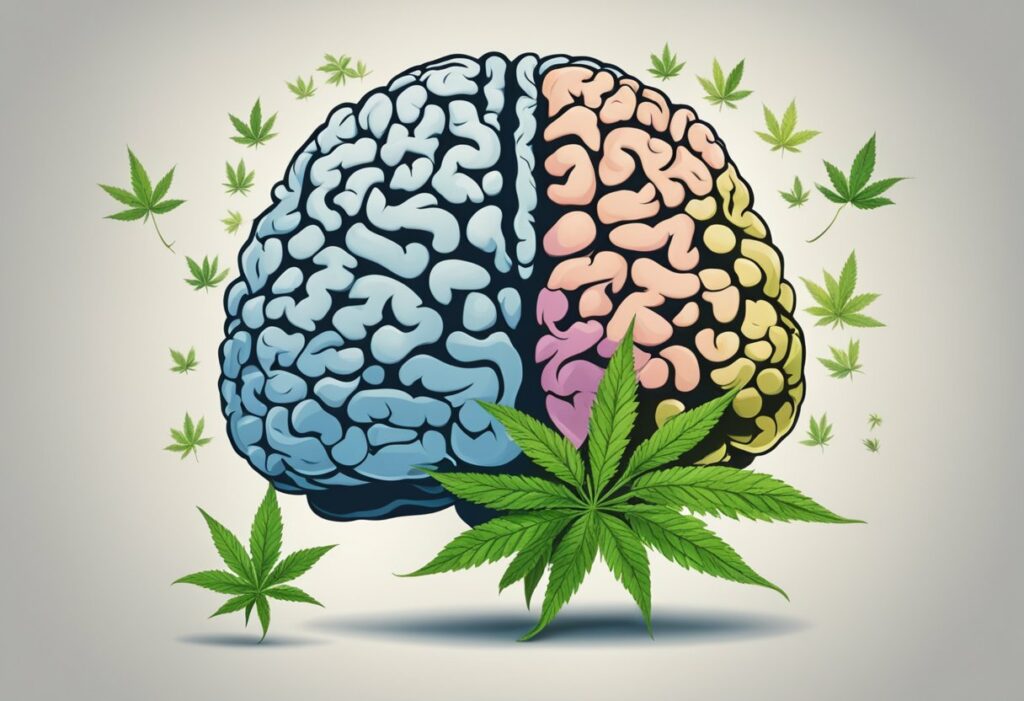
Weed, primarily through its active component THC, can affect various physiological and neurological functions. When consumed, cannabinoids interact with the body’s endocannabinoid system, which can result in a range of effects from relaxation to drowsiness.
Neurological Pathways
THC, the main psychoactive compound in cannabis, interacts with the brain‘s cannabinoid receptors. This binding action can disrupt normal neurological pathways, leading to alterations in mood, perception, and behavior. A key neurotransmitter involved is dopamine, which contributes to the sense of euphoria often associated with cannabis use. However, this interaction may also lead to drowsiness, impacting an individual’s energy levels.
- Short-term effects on the brain can include:
- Mood changes
- Impaired body movement
- Difficulty with thinking and problem-solving
- Impaired memory
Physical Effects on the Body
The physical effects of weed on the body are multifaceted. Upon entering the bloodstream, typically through the lungs when smoked, THC can lead to a temporary increase in heart rate. It may also affect breathing patterns and cause an overall sense of relaxation.
- Immediate physical reactions may comprise:
- Altered heart rate
- Reddening of the eyes
- Increase in appetite
- Dry mouth (cottonmouth)
Studies, such as those linked through Adverse effects of cannabis and cannabinoids, suggest that the central nervous system depressant effects can lead to pronounced relaxation and sleep, a state that some may describe as feeling tired or lethargic. The array of effects demonstrates the complex nature of cannabis’s impact on the human body, underlining the importance of understanding these reactions.
Potential Side Effects and Risks

When consuming cannabis, individuals may experience various side effects and health risks that can impact their short-term well-being and have long-term health implications.
Short-Term Side Effects
Cannabis consumption, particularly through smoking, can lead to a range of immediate side effects. In the short term, users might experience:
- Lethargy and drowsiness: A common side effect that can lead to reduced alertness and overall tiredness.
- Nausea: Some individuals feel nauseated after smoking weed, especially if they are new to its use or consume a higher dose.
- Eyes: The use of cannabis can result in bloodshot eyes due to the expansion of blood vessels.
- Appetite: There may be an increase in appetite, often referred to as “the munchies.”
- Lungs: Smoking weed can cause irritation to the lungs, leading to coughing and a feeling of breathlessness.
Long-Term Health Risks
The long-term health risks associated with regular cannabis use are diverse and include:
- Cannabis withdrawal: Those who use cannabis frequently and then stop may experience withdrawal symptoms, including irritability, mood changes, and sleep difficulties.
- Chronic pain management: While some use cannabis for pain relief, chronic use can lead to increased tolerance, potentially impacting its effectiveness.
- Liver: There is ongoing research into how cannabis affects the liver, particularly in those with liver diseases.
- Prolonged lethargy: Continued use might result in sustained periods of lethargy and lack of motivation.
It’s important to consider these potential side effects and long-term health risks when deciding to use cannabis, as they can affect individuals differently based on a variety of factors including frequency of use, dosage, and personal health.
The Role of Cannabis Strains in Tiredness
Different cannabis strains can have distinct effects on a user’s energy levels, with some rendering a sedative effect while others may offer an energy boost. Understanding the variances between indica, sativa, and hybrid strains, as well as strain-specific impacts, is crucial to predicting how one might feel post-consumption.
Indica, Sativa, and Hybrid Strains
Indica strains are typically associated with a sedative effect, making them a common choice for people seeking to alleviate insomnia or stress. Granddaddy Purple, for instance, is an indica that’s often reported to induce relaxation and sleepiness. Sativa strains, like Sour Diesel, are known to produce a more euphoric and energetic experience, which may be conducive to daytime activities. Hybrid strains fall between these two, offering a balance of effects, and ‘GG4’, a popular hybrid, is recognized for delivering full-body relaxation without heavy sedation.
Strain-Specific Effects on Energy Levels
Cannabis works through the body’s endocannabinoid system, and each strain has a unique profile of cannabinoids and terpenes that influences its effects. Strains high in CBN, a cannabinoid that increases as THC ages, tend to have stronger sedative qualities. Others, like Northern Light, might be categorized as indica but can offer more gentle sedation suitable for evening use without intense tiredness. It’s important to note that individual reactions can vary, making personal experimentation and knowledge of one’s own tolerance essential when exploring the energetic versus fatiguing effects of different cannabis strains.
Cannabis Consumption Methods and Their Impact

The way cannabis is consumed can significantly affect how it impacts the body, particularly in terms of tiredness. Each method of consumption, from smoking to ingesting edibles, comes with its own onset time and duration of effects.
Smoking vs. Edibles
Smoking is the most common method of consuming cannabis. When a person smokes weed, the active compounds, including THC, are absorbed quickly into the bloodstream through the lungs, leading to an almost immediate onset of effects. This rapid absorption can result in a more intense but shorter-lived sensation of tiredness compared to other methods.
In contrast, edibles—cannabis-infused food products—offer a different experience. When cannabis is ingested, THC is processed by the liver before entering the bloodstream, which not only delays the onset of effects but also can convert THC into a more potent form. This process can lead to a prolonged and sometimes more sedative effect, potentially increasing feelings of tiredness, which can last for several hours.
Dosing and Its Role in Tiredness
The amount of cannabis — or the dose — is crucial in determining the level of tiredness one might experience. Greater doses of cannabis products, whether smoked or ingested as edibles, typically intensify the feelings of sedation. However, because the effects of edibles are delayed, there is a risk of overconsumption as users may ingest more to achieve desired effects, inadvertently increasing the likelihood of significant tiredness.
It’s important to understand that dosing can be less predictable with edibles due to the delayed onset of effects. This underscores the importance of careful dosing, especially for individuals who are using marijuana for therapeutic purposes or are new to cannabis consumption.
Medical Use of Cannabis for Sleep and Pain
Cannabis has garnered significant attention for its potential in managing pain and sleep disorders such as insomnia. It is used by some patients seeking relief from chronic pain and to improve sleep quality through its various medicinal properties.
Cannabis in Pain Management
Medicinal cannabis contains compounds that have been found to offer pain relief. Clinical evidence suggests that the cannabinoids, such as THC and CBD, present in cannabis products interact with the body’s endocannabinoid system, which plays a key role in regulating pain. For instance, in managing chronic pain, products like Sativex®, which is a combination of THC and CBD, have shown efficacy in reducing pain symptoms in some patients. The analgesic effect of cannabis can vary and patients should approach treatment under medical supervision.
Weed as a Natural Sleep Aid
Patients with sleep disturbances often turn to cannabis as a natural sleep aid. The sedative properties of certain strains of cannabis can help individuals fall asleep faster and potentially improve sleep quality. THC, one of the primary active ingredients in cannabis, is known to have sedating effects, which may be beneficial for treating symptoms of insomnia. However, it’s important to note that while some have experienced an improvement in the duration and quality of sleep, the impact of cannabis on sleep can be influenced by various factors including the specific cannabinoid profile of the product and individual patient responses.
Lifestyle and Consumption Patterns
Cannabis affects individuals differently based on their lifestyle, consumption patterns, and the intent behind its use. While some may use it recreationally, others might be guided by medical advice to address specific health issues. These varying contexts play a significant role in how marijuana impacts fatigue levels and overall sleep quality.
Recreational vs. Medicinal Use
Recreational use typically refers to the occasional or regular use of cannabis for pleasure or leisure without a medical justification. Recreational users often seek the euphoric effects of THC, the primary psychoactive compound in cannabis. However, these sessions can lead to increased feelings of relaxation that might cause drowsiness or tiredness, affecting their energy levels and sleep patterns.
On the other hand, medicinal use is based on utilizing cannabis to alleviate symptoms of various medical conditions as recommended by a healthcare professional. Medicinal users aim for symptom relief while typically trying to minimize psychoactive effects, which might involve CBD-rich strains or products. Such an approach can influence sleep quality differently, potentially improving rest for those with conditions that disrupt sleep.
The Influence of Tolerance and Microdosing
Building a tolerance to cannabis can significantly affect how it influences fatigue and energy levels. Frequent use over time can lead to reduced sensitivity to the plant’s effects, prompting users to consume higher amounts to achieve the desired outcome. This escalation might inadvertently increase the sedative properties of cannabis, influencing daytime alertness and potentially contributing to a cycle of disrupted sleep.
Contrastingly, microdosing—the practice of taking very small amounts of a substance to achieve its benefits without a full-blown psychoactive experience—can have a less pronounced impact on energy levels. By carefully controlling the dosage, users aim to maintain functionality and minimize side effects such as tiredness or impairment. Microdosing cannabis can be particularly useful for recreational users looking to avoid drowsiness and for medicinal users hoping to maintain regular exercise and daily activities without compromising their alertness.
The dialogue around cannabis use continues to evolve, emphasizing a nuanced understanding of how different consumption patterns—including the frequency of use, purpose, dose, and individual lifestyle factors such as physical activity—intersect with each person’s unique physiological responses. This complexity underscores the need for continued research and personalized approaches to cannabis consumption, ensuring that both recreational and medicinal users can make informed choices that align with their health and daily living requirements.
Comparative Substance Analysis
In analyzing the effects of cannabis compared to other substances, it is crucial to consider its impact on sleepiness and the interplay with other common psychoactive compounds, such as alcohol and caffeine.
Weed vs. Other Sedatives
Cannabis contains psychoactive cannabinoids such as Δ 9 -tetrahydrocannabinol (THC), which are known to induce sedation. Compared to other sedatives, cannabis can lead to feelings of drowsiness, tiredness, and sleepiness. Studies reveal that THC is largely responsible for these effects; however, it may not cause fatigue to the same extent as certain sedatives. Users of synhexyl, for instance, undergo fatigue measurement scales to assess the level of tiredness, which may differ in its intensity compared to the sedation from cannabis.
- Sedatives: Likely to cause heavy drowsiness and can induce sleep.
- Cannabinoids: Induce a milder form of sedation compared to many sedatives and can affect the memory process.
Cannabis and Caffeine/Alcohol Interaction
Cannabis interaction with caffeine and alcohol can alter its sedative effects. Caffeine, a stimulant, may temporarily counteract the sleepiness induced by cannabis. However, when the effects of caffeine wear off, the sedative effects of cannabis might be more pronounced, impacting the user’s sleep cycle.
- Caffeine: Can mask the sedative effects of cannabis but may lead to greater sleepiness afterwards.
The combination of cannabis and alcohol can exacerbate the sedative effects and could potentially result in a stronger sense of fatigue or an alcohol hangover. The interaction between these substances has implications for both sedation and cognitive functions.
- Alcohol: Enhances the sedative effects of cannabis and contributes to next-day hangover symptoms.
Understanding and Mitigating Negative Effects
When assessing the tiredness associated with cannabis use, it’s imperative to explore strategies aimed at minimizing negative impacts such as overconsumption, appetite changes, and potential dependence.
Managing Dosage and Usage
The key to reducing the sleep-inducing effects of cannabis lies in managing dosage and frequency of use. Users should start with a low dose and gradually increase it only if necessary, which can help in preventing undesired drowsiness and in maintaining balance in daily activities. It’s important for individuals to pay close attention to their body’s response to cannabis, as higher doses can lead to a decrease in movement and attention, or an increase in appetite or, conversely, a loss of appetite in some users.
- Begin with a low dose: Starting with a minimal amount can prevent overconsumption and reduce risks of tiredness.
- Monitor frequency: Limiting use can help avoid the development of dependence or addiction.
Balancing Cannabis Use with Healthy Habits
Incorporating a regimen of healthy habits can offset some of the lethargy associated with cannabis. Regular exercise, a diet rich in nutrients, adequate water intake, and enough sleep each night establish a foundation that can mitigate feelings of irritability or impairment often associated with cannabis use. These steps also promote better heart health, reducing risks such as a heart attack, which has been raised as a concern in some studies observing the cardiovascular effects of cannabis.
- Exercise: Engage in regular physical activity to increase energy levels and improve sleep quality.
- Nutrition: Eating a balanced diet ensures the body receives essential vitamins and minerals, supporting overall health and well-being.
- Hydration: Drinking enough water helps maintain the body’s balance and can alleviate some side effects of cannabis like dry mouth.
- Rest: Ensure sufficient sleep to recover from any potential cannabis-induced grogginess.
Legal and Societal Perspectives on Weed Use
The use of cannabis, colloquially known as weed, has profound implications on both mental health and societal norms, raising questions about regulatory frameworks and public safety.
Impact on Mental Health and Social Behavior
Cannabis consumption has been linked to a variety of mental health issues, ranging from temporary conditions such as increased anxiety to long-term effects like depression. Research into the relationship between weed use and mental health is evolving, with some studies suggesting that it may exacerbate existing mental health conditions. Socially, cannabis use may lead to behavioral changes, including alterations in social interactions and the potential for increased social isolation.
- Mental Health Effects:
- Anxiety: Increased feelings of nervousness and paranoia in the short term.
- Depression: Potential for mood destabilization with chronic use.
- Social Behavior Changes:
- Munchies: Heightened appetite commonly experienced during cannabis use.
- Interaction: Variable effects on social engagement and communication.
Regulatory Considerations and Public Safety
Regulatory concerns regarding cannabis pivot on establishing laws that protect public safety while acknowledging the shifting public perception of weed as a legal substance. This includes creating guidelines around the production, distribution, and consumption of cannabis to assure it does not contribute to harm. The science around cannabis is crucial in these regulations, informing policymakers about potential risks to the immune system and the fine line between medicinal benefits and recreational risks.
- Regulatory Aspects:
- Licensing and production oversight to ensure quality control.
- Limits on THC content to mitigate the risk of harm to consumers, especially minors.
- Public Safety Measures:
- Driving restrictions post-consumption to prevent impaired driving.
- Public education campaigns to communicate the legal and health ramifications of use.
Frequently Asked Questions
The impact of cannabis on sleep and energy levels has been a subject of both study and personal testimony. The following FAQs distill current understandings into concise answers.
What are the common effects of cannabis on sleep patterns?
Cannabis is frequently reported to affect sleep quality, with many users claiming it helps them fall asleep faster. However, research also suggests it could potentially disturb sleep cycles, depending on the individual and the consumption method.
Can consuming marijuana lead to increased fatigue?
Chronic use of marijuana may lead to increased fatigue, especially during periods of non-use, as the body adjusts to the absence of the substance it has grown accustomed to.
How does THC influence energy levels in the user?
THC, the psychoactive component in cannabis, may induce relaxation and drowsiness, effectively reducing energy levels in users, particularly at higher doses.
What is the relationship between cannabis use and daytime sleepiness?
There can be a complex relationship between cannabis and daytime sleepiness, with some studies indicating that disruption of sleep architecture can cause daytime drowsiness, while other factors such as dosage and individual reactions also play a role.
Are there differences in tiredness based on different strains of cannabis?
Different strains of cannabis, often referred to as indica and sativa, are believed to produce varying effects. Anecdotally, indica strains are linked to relaxation and may lead to more pronounced feelings of tiredness than sativa strains.
How can one mitigate feelings of tiredness after using cannabis?
To mitigate tiredness after consuming cannabis, users may consider moderating their consumption, choosing strains known for less drowsiness-inducing effects, or using the substance at times when its sedative qualities can be beneficial, such as closer to bedtime.

